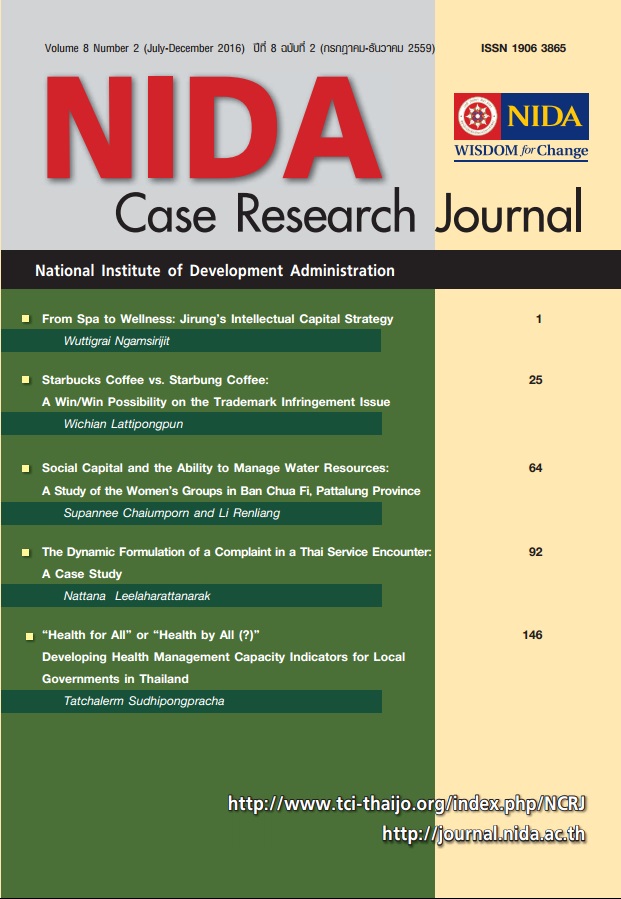From Spa to Wellness: Jirung’s Intellectual Capital Strategy
Keywords:
Intellectual capital, Business development, Creative servicesAbstract
In the modern world, the perspectives on value have evolved from dependence
on tangible to more intangible assets. A business could gain competitive advantages
from effectively managing and integrating both of them. Thailand’s health tourism
industry enjoyed intangible assets in mainly the spa sector, which had been
growing in numbers of establishments for two decades.
Until 2012, a government think tank, the Offce of Knowledge Management
and Development (OKMD), had been focusing on fnding new service concepts to
strengthen the spa sector. Aware of the role of creativity in the services and keen
to create new service value from intellectual capital, the OKMD championed
the introduction of the concept of “creative services” as a strategic direction
for the Thai spa industry that would serve to differentiate Thai spa services from
those of neighboring countries. However, to date, many spa business owners
and practitioners were still questioning what the phrase, “creative services,”
meant and how to achieve it.
The case study begins with descriptions of the current status of the
Thai spa industry, its economic and employment importance to the Thai
economy, its vulnerability in its current form to the ups and downs of annual tourist arrivals and spending, and the growing competition from
neighboring nations for tourist expenditures on health tourism, especially
spa type services. The case then focuses on Jirung Group, a prominent player
in the Thai spa sector whose Jirung Health Village establishment had been
among the frst to pioneer the concept of a “wellness” business with client
services focused on treating the whole person and restoring the balance
among body, mind, and spirit. Next highlighted are Jirung’s continuing
efforts in creating and managing its intellectual capital to inform the
conceptualization, design, and delivery of creative wellness services based
on its tangible and intangible assets. The reader is given an up-close look at
how Jirung Health Village identifed, perfected, and combined its
intellectual capital in ways that continue to lead to the marketing and
delivery of new wellness services for various market segments. As the tale of
Jirung’s successful pursuit of the “wellness” paradigm comes to a close, the
analyst is left to ponder whether such a transformation is practicable for the
Thai spa industry as a whole, and if so, how it can be achieved.





